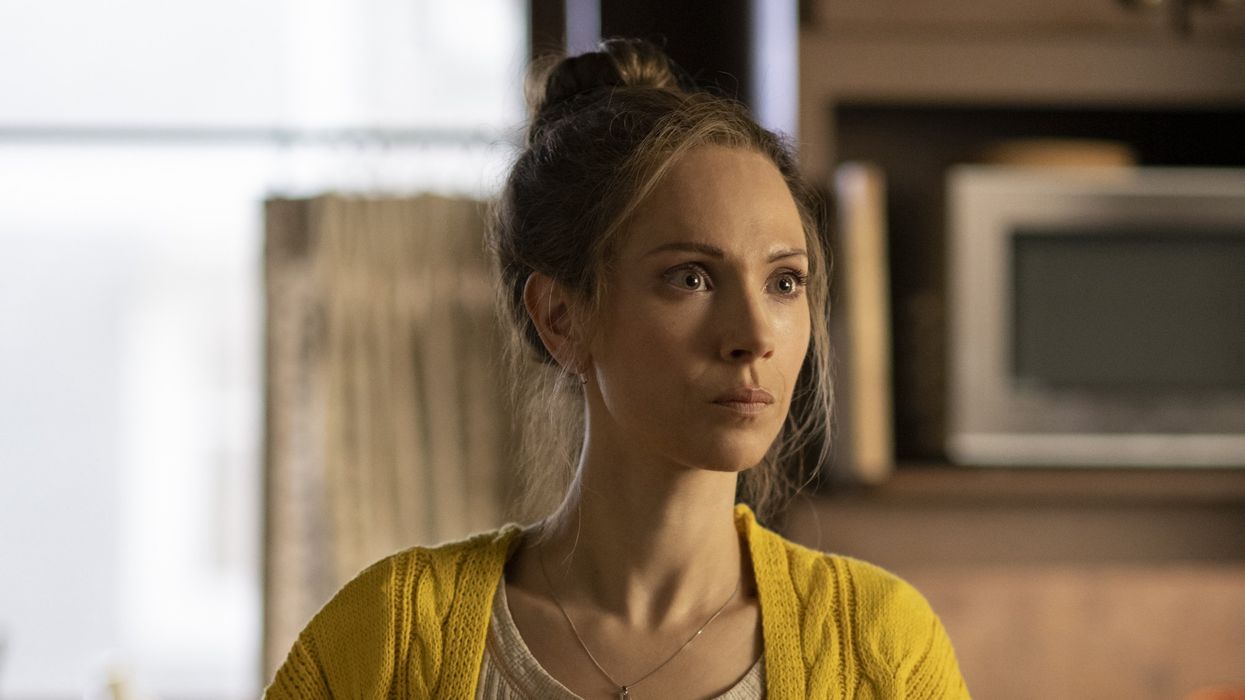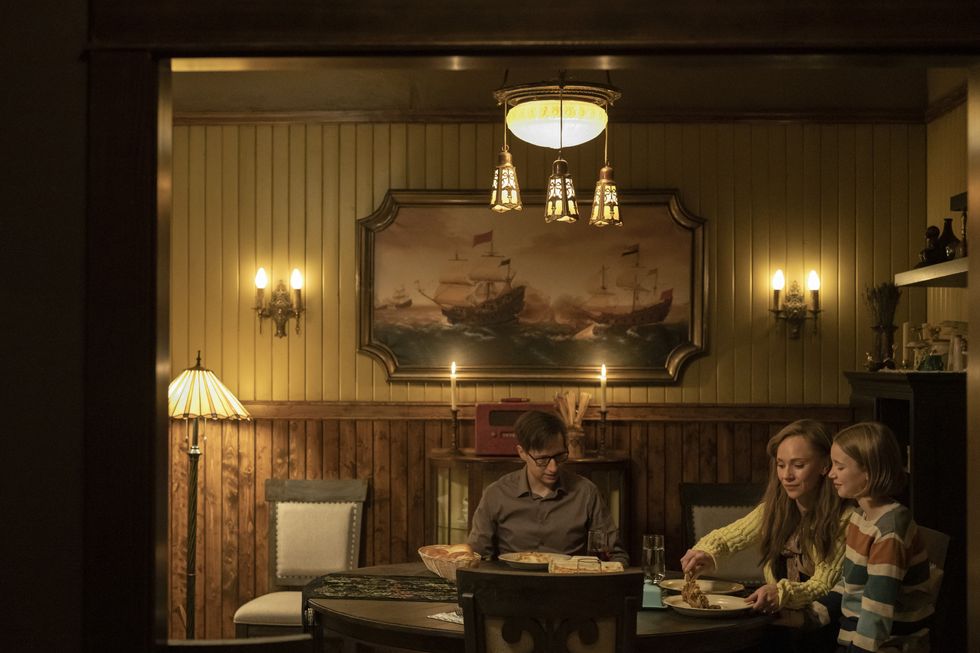How To (Literally) Build the World of 'Fargo' Season 5
We speak with Fargo's cinematographer and director, Dana Gonzales.

Juno Temple as Dorothy “Dot” Lyon in Fargo.
Dana Gonzales is a frequent Noah Hawley collaborator, and has recently joined the team of Fargo, Installment 5, as a director, cinematographer, and producer.
The new season just premiered, and the story follows Dorothy “Dot” Lyon (Juno Temple) and her family. After a run-in with the law, Dot's mysterious past slowly comes to light, and there's a certain sheriff (Jon Hamm) who's interested in reconnecting with Dot—forcibly, if need be.
These worlds come crashing together in a pretty epic series of scenes in the first episode, which Gonzales got to prep as the DP. These sequences happened on impressive set builds, as you'll learn below, and Gonzales walks us through the challenges of blending multiple sets and locations in the middle of action sequences.
Feast your eyeballs on Gonzales' insight below.
Fargo | Installment 5 Official Trailer | Juno Temple, Jon Hamm, Jennifer Jason Leigh | FXwww.youtube.com
Editor's note: The following conversation has been edited for length and clarity.
No Film School: I'm a big fan of both your work and Noah Hawley's work, and you've collaborated pretty extensively. What do you like about that partnership?
Dana Gonzales: When you could work in an environment that is the ultimate creative environment—that's safe, where you could take risks and you're kind of invited to take risks and push and you have a creative partner that is as adventurous as you are and wants to constantly push for excellence and go out of their comfort zone—that's a rare thing in this business to meet somebody that you could do that show after show, episode after episode, whatever project.
I do other projects with other people, but the comfort ... Just what we're able to achieve with Noah has just been the best for me.
NFS: How do you establish the visual language of a show like Fargo Season 5?
Gonzales: Noah and I both talk about the visual language of every season. Every season's different, which makes it challenging. And we're not shooting a pilot per se—but we are, and we don't necessarily get pilot money, but we're building new worlds. Every show I do with Noah, every season is a bit of a world-building situation. When we did Legion, even Season 2 and 3 looked different than Season 1. They were different environments.
Fargo is like that as well. And it always starts with a conversation from the very beginning of something that he's been thinking about or I've been thinking about.
I mean, he's had more time to think about it. When I first read the script, he's been writing it and he's got something in his head, and then we just start talking about it and working on it. And I kind of go and come up with something and then come back and kind of present it. And the good thing again about our collaboration is that we always ... I bring something to him and what he normally does is you bring something and he just loves it, or he just says, "Okay, cool, what about this?" And it heightens it or takes it to another level, but we get to that point very quickly, and so our aesthetics are aligned.

NFS: You DP'd episodes one and two. What's your favorite shot or sequence from those episodes?
Gonzales: There's a great sequence when Dot gets kidnapped that [was] a lot of work. It may not look like it in a way, but there's a lot of things happening. There's a lot of gags. ... It works stylistically, it works in the action of it. It keeps the humor and the drama alive.
So it is very successful in that. There's a big shootout, which is probably the bigger sequence in [episode] one. It's always hard to say which one is better or whatever. Definitely the kidnapping is the core of the season, so it's really great. It's a really great sequence.
NFS: Could you talk a little bit more about the challenges of shooting that?
Gonzales: So we had to build an interior set of the house. This is Dot's house, Dot Lyon's house, and we built an exterior of the house, a real exterior on a lot in a neighborhood. And so blending those together is always a bit of a challenge because we're not trying to use green screens at all. We're using backings and/or being on location on the exterior set.
And so over a period of, [it] may take two weeks to shoot this sequence, it's long. You're blending those and then there's even the aftermath of the sequence where there's some details that the police see and her husband sees, and you're tying it all together and it's literally over two different locations, a sound stage, which is completely artificial, and an exterior. And so blending those together where the audience never is taken out of that and you believe you're there.
And then just, even the challenges of how we put the cameras, where we put them. So there's a lot of things in prep where you're like, "Okay, this entire feeling and piece has to go in, this has to be a second story. There has to be a second story onto the first-story set."
You have to think about all these different shots and how you're going to do them, and what you're going to see, and how you're going to bring them together, and how you're going to tie them together, versus the shootout I talked about which was the location we built. It was all shot basically on the one location. So that is probably why I think that that challenge is slightly bigger ...
And then later on in the season, there's another sequence that shoots a similar way where you're tying in both sets. And to do that effectively, and again where the audience isn't taken out, is always a big challenge.

NFS: Was the gas station a build too?
Gonzales: The gas station was a build. Yeah, we built it on an airstrip.
It was a tough one. We had to find a location that we could drive on and tie it in together. It had to be in a remote area.
We always try to find locations that we could just take over and build into our set, but for that one, we just had to build it from the ground up. And so it worked for everything. And again, we had to talk it through and say, "Okay, they're driving, they see the cop, they get pulled over all these things, they run over here, and then the whole shootout itself inside the gas station." And so those are decisions that you make in prep that either help you or haunt you, but most of the time help us.

 "'Back Home"via Mercedes Arutro
"'Back Home"via Mercedes Arutro 'Back Home'via Mercedes Arutro
'Back Home'via Mercedes Arutro 









